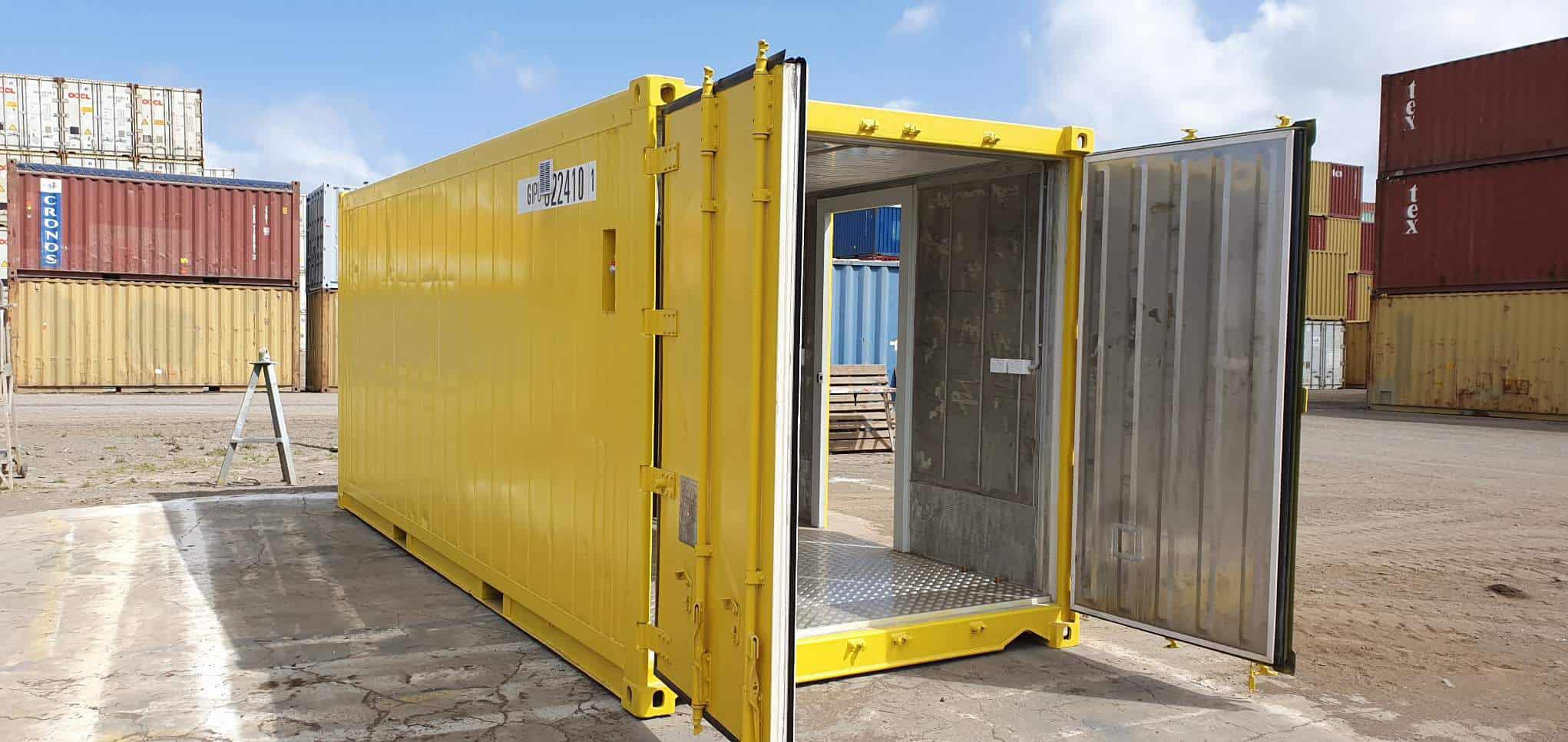The Anatomy of the Shipping Container

Shipping containers are extremely useful and can be reused for many applications after their original shipping use. Each container can hold up to 60,000 pounds of cargo and are constructed to ensure they are not only strong but also durable. They have many key features that help to make them useful and durable including:
Lock Boxes: One trip shipping container may have lock boxes added to them whereas used containers do not have this feature. This is something that people request to be added for security purposes when they purchase or hire a container.
Double Seals: All shipping containers come standard with double seals around their doors which makes them resistant to weather and to rodents. Depending on what you have stored in your container, you do not want rodents or bad weather getting into the container to spoil or damage your goods.
Vents: Shipping containers have a minimum of two vents which are designed to provide air flow and ensure that sweating does not occur. Ventilation is important to prevent mold from growing and sweating can cause damage by increasing the moisture inside of the container causing damage to the contents.
Fork Pockets: 20-foot containers are all equipped with fork pockets, but you will not find them on 40-foot containers. The main reason is that a 40-foot container is not only awkward but also too heavy for a fork lift to raise the container. Larger, heavier containers can be lifted with the corner fittings which are located on the top corners of the containers which allow them to be stacked on top of each other.
Steel Walls – Shipping containers are constructed from 14-gauge corrugated steel. Since the walls are not part of the structural integrity of the unit, the walls can be modified without weakening the structure of the container.
Lock Bars – Shipping containers have double doors that are fitted with lock bars that can all be separately padlocked, adding extra security. Each shipping container has four lock bars on its rear doors.
Roof – the roof is constructed from roof bows which are under the roof structure and placed either 18 or 24 inches apart. These are mainly found in open top containers however modern steel containers will have flat sheet steel roofs which are welded to the frame. Container roofs are the part of the container that are most likely to be damaged.
Sides and Front of Container – the modern steel shipping container has corrugated steel panels for sides and the front. If the container is constructed from aluminum, then there will be aluminum sheathing covering the front and the sides to the container. Stringers are used to secure the aluminum and provide structural integrity. Some containers do not have stringers to support the panels because they are made from fiberglass.
Doors – can be made from ply metal which has plywood for the core and facings made from aluminum or steel. The hinged doors have gaskets to seal the container so that water cannot get inside of the container.
Security Seal – used together with the locking mechanism with seals the container. Security seals have numbers on them and may also be colour-coded. These seals help with security needs.
Corner Post – The vertical frame parts which are found in the corners of shipping containers connect to corner castings and the floor to secure the structure of the unit. The corner castings are in the corners of the shipping container and are used to lift the container with a crane.
Front End Frame
The opposite end of the container from the entrance consists of top and bottom rails which attached to the corner posts at the front of the container. These are also secured to the corner castings.
Floor – the floor of a shipping container is generally constructed from 1 1/8” plywood secured to steel cross-members which are spaced at least 11” from one another.
Top Rail – these are the long members which span the top of the container on opposing sides.
Bottom Rail – these structural members are found at the bottom on the sides of the shipping container which help to hold the structure of the container together.
Cross-members – these are beams that cross the container at various intervals and are attached to the bottom and the floor of the shipping container.
The various parts of the shipping container give it strength and hold it together so that it is sturdy and secure for shipping cargo and for a wide range of uses after it has completed a shipment. Whether you are looking to rent or to purchase a container, contact a knowledgeable shipping container supplier to ensure that you have access to the best shipping container stock available.
Image from Tiger Containers
Read more about the anatomy of the shipping container at Tiger Containers

